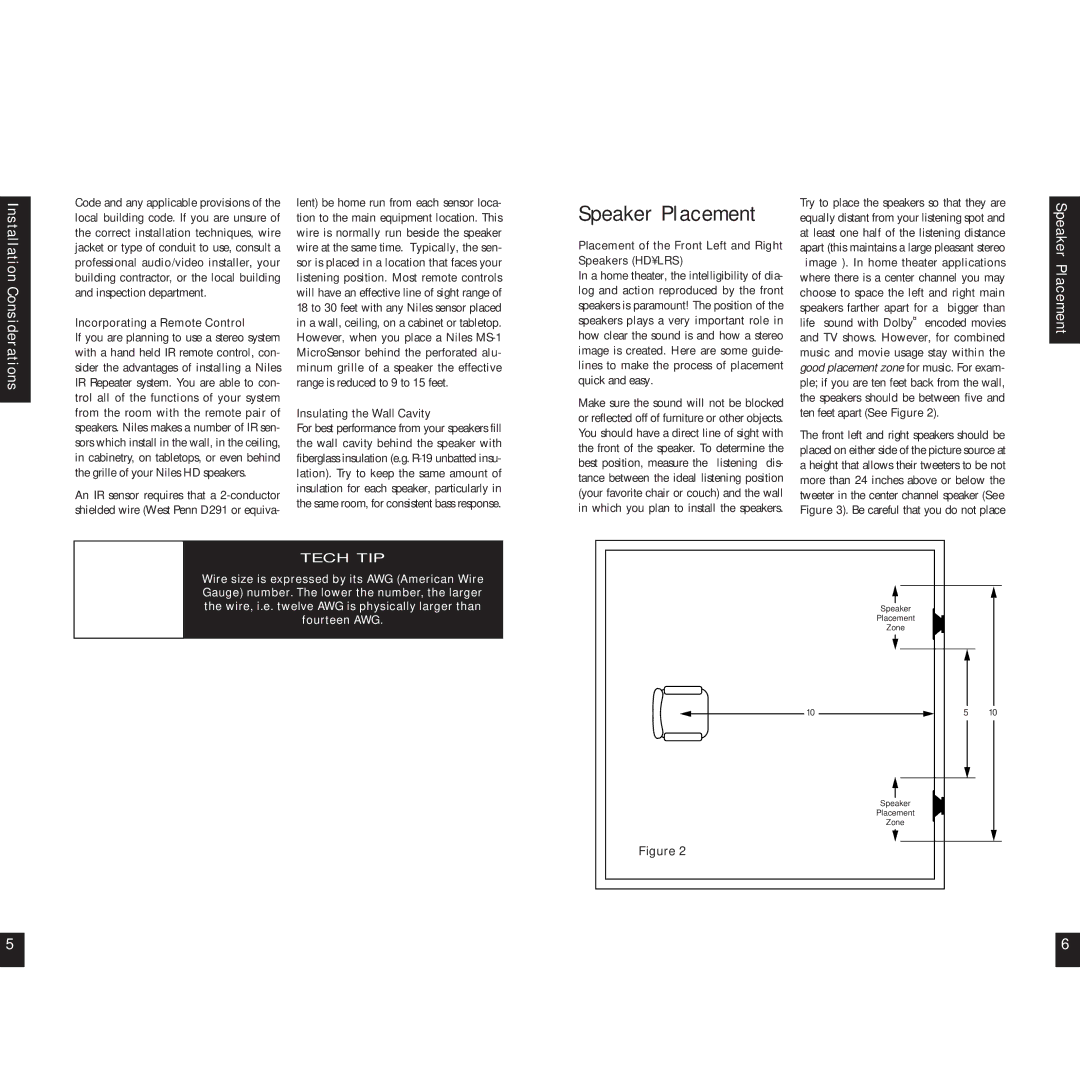HDCTR, HDLRS specifications
Niles Audio has a longstanding reputation in the realm of home audio solutions, and its HDCTR and HDLRS models are exemplary representations of the brand's commitment to high-performance audio technology. These models cater to enthusiasts looking for comprehensive audio experiences with cutting-edge features and advanced engineering.The Niles HDCTR, a center channel speaker, is designed to provide clarity and depth for dialogue and soundtracks in home theater setups. One of its main features is the use of advanced, high-efficiency drivers that reproduce a wide frequency range, ensuring that every nuance in sound is captured. The speaker is engineered with a high-performance 6.5-inch woofer coupled with dual 1-inch soft dome tweeters, allowing it to deliver an impressive audio performance whether you’re watching movies or listening to music.
On the other hand, the HDLRS model stands out as a pair of surround speakers that enhance the immersive experience whether in a stereo or surround sound configuration. Each speaker utilizes a 6.5-inch woofer and dual 1-inch tweeters for a balanced sound stage. The design of the HDLRS also allows for flexible placement options, making it easy to integrate into diverse home environments.
Both models feature Niles' proprietary technologies that minimize distortion and improve dynamic range, enhancing overall listening pleasure. The HDCTR is equipped for wall-mounting, allowing for seamless integration into your home theater system. Meanwhile, the HDLRS includes adjustable mounting brackets which enable precise angling to optimize sound directionality.
In terms of build quality, both speakers boast a robust design with attractive aesthetics that can complement any room decor. The cabinets are crafted from durable materials that not only withstand the test of time but also help to reduce unwanted resonance, thereby improving audio fidelity.
Furthermore, the low impedance design of the HDCTR and HDLRS models ensures compatibility with a wide range of AV receivers, making them accessible for both professional installers and casual users alike. This level of flexibility makes them excellent choices for those looking to elevate their audio experience, whether for casual listening or serious home theater setups.
Overall, Niles Audio's HDCTR and HDLRS speakers embody a perfect blend of style, performance, and technological innovation, catering to audiophiles who seek unmatched sound quality and versatile solutions for their audio needs.

